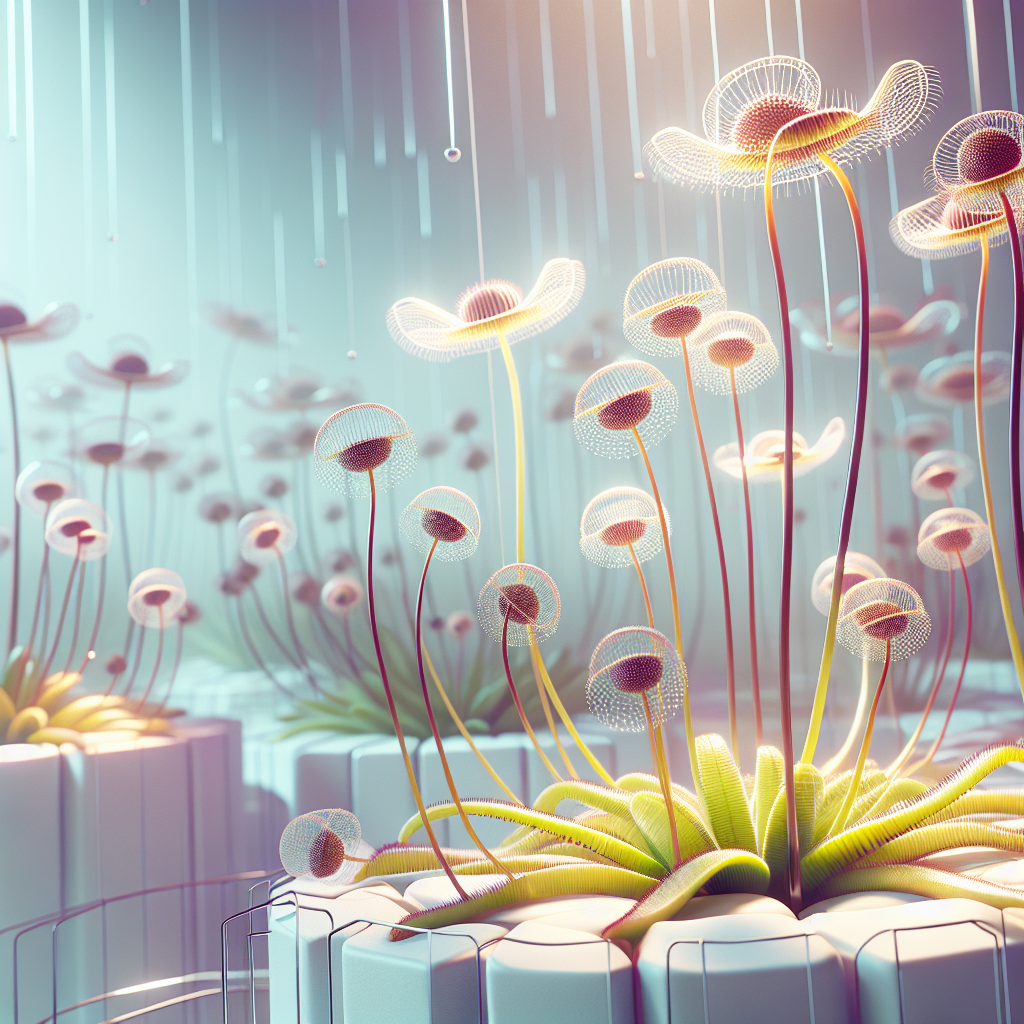Imagine a world where plants are not passive, serene green sprites decorating our world, but cunning little traps on an eternal quest for a meal. Enter the captivating realm of Utricularia sect. Foliosa. Found mostly in the Americas, from wet organic soils to the shallow waters of lakes and rivers, these plants don’t feed on sunlight alone. They hunt. Now, who would have thought that a modest plant, a carnivore no less, has graced such unassuming places? Somehow makes one take the garden a little more seriously, doesn't it?
Utricularia sect. Foliosa is part of the bladderwort family. Straddling the fascinating intersection of botany and wildlife, they embody a quiet rebellion against the often-preconceived notion that plants are static or submissive. In a world where many still find their conception of plants is occasionally stuck in a place where vegetables are just humble herd members of the food chain, it's refreshing to meet a rebel that challenges such views head-on. Plants, like us, adapt, evolve, and surprise.
These plants are primarily aquatic or live in saturated soils, with their specialized leaves having developed the most intriguing adaptation—they form tiny bladders. These remarkable structures function with a deadly efficiency. Each bladderbed might seem like an innocuous part of the plant, but they're no less than tiny vacuum traps under a high degree of tension. They remain closed until unsuspecting tiny animals such as protozoa, water fleas, or insect larvae unwittingly stumble too close. In less than a second, the bladder snaps open, the prey gets sucked inside, and the botanical predator slams the door shut. Dinner is served.
Some might say, isn’t this just cruel? Shouldn’t plants stick to their peaceful ways? However, as nature reveals, survival fuels innovation, and every living being, plant or animal, seizes whatever edge they can to endure and thrive. In nutrient-poor environments where these plants are usually found, such a sophisticated diet provides them nutrients that others find hard to come by. Sometimes, it’s nothing less than impressive to see such resourcefulness.
An intriguing aspect of Utricularia sect. Foliosa is their adaptability. They aren’t just ruthless hunters but are incredibly efficient survivors. They cover all their bases, so to speak. When conditions demand, they can adapt to feed more conventionally through photosynthesis alone, proving that even plants can listen to Darwin’s timeless suggestion to 'adapt or perish.' Evolution, it seems, plays out in ways both grand and microscopic.
This points to a broader conversation about diversity and change within nature. In a broader sense, much like the complexities of our own societies, nature has a way of fostering remarkable adaptations. The more we learn, we are better equipped to handle the ethical questions and implications these natural wonders evoke. Understanding them is part of the evolving human experience too.
Humans have long looked at nature for inspiration, for both technical and philosophical enlightenment. The ways in which Utricularia sect. Foliosa efficiently maximize resources highlight the beauty of niche exploitation—taking what you must when you can get it—a survival skill as useful to humans as it is to plants.
Open discourse about carnivorous plants serves as a reminder of the inherently complex network of life. In understanding their existence, it becomes a reminder that ecosystems are fragile, balancing acts where even the tiniest plants play massive roles. Learning about them urges us to reflect about our own environmental challenges and promotes conservation.
Plus, isn’t it humbling? That our sneaky strategies for survival might just be moulded from what’s observed in nature around us? That, in some ways, looking at the minuscule traps of Utricularia sect. Foliosa, we could find a perspective shift helpful in training the innovation required to tackle challenges the current and future generations face?
Next time you pass a pool of water glistening in a rainforest or spot a boggy patch of land, you might pause and ponder. It’s a little wild to imagine what dynamic life is hidden within. What would happen if we look past what we easily see and learn from the small, the unconventional, and the unexpected?

